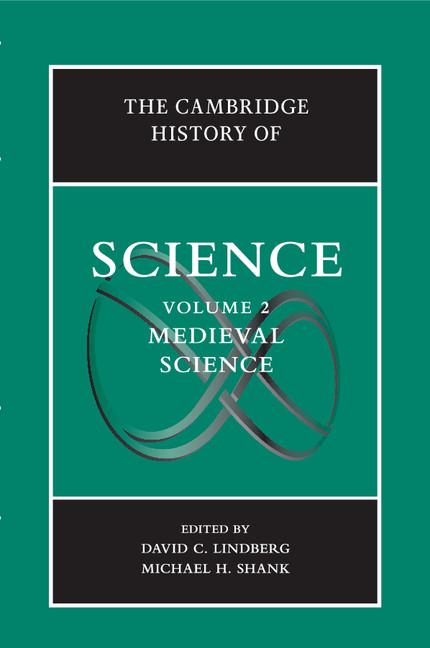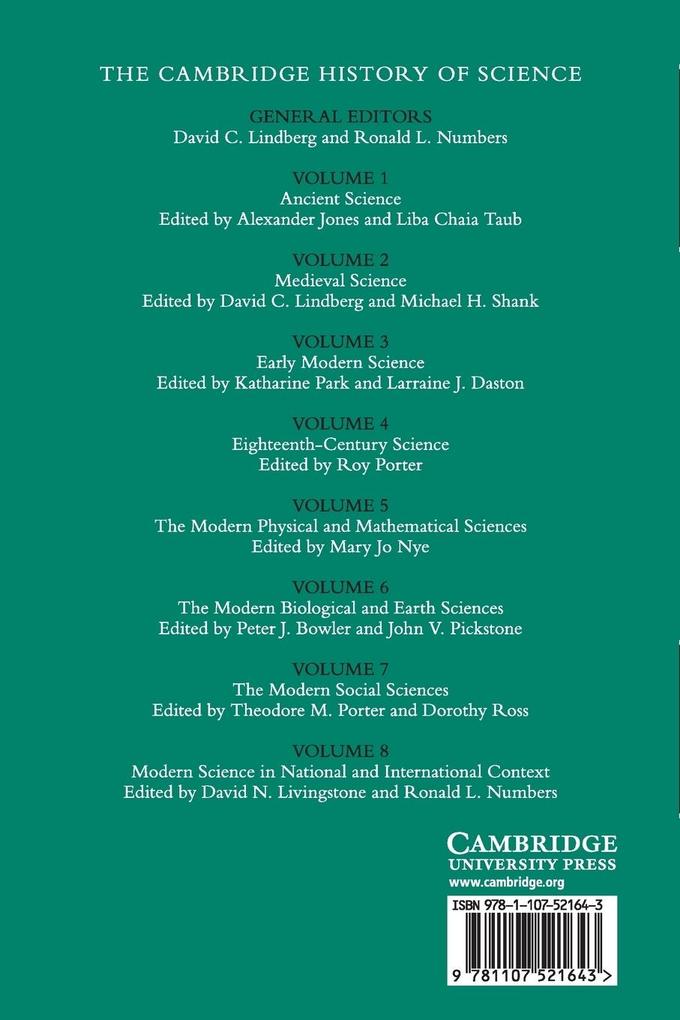
Zustellung: Mo, 16.06. - Do, 19.06.
Versand in 6 Tagen
VersandkostenfreiBestellen & in Filiale abholen:
Reveals the diversity of goals, contexts and accomplishments in scientific study during the Middle Ages.
Inhaltsverzeichnis
General editors' preface; Introduction Michael H. Shank and David C. Lindberg; 1. Islamic culture and the natural sciences F. Jamil Ragep; 2. Islamic mathematics J. L. Berggren; 3. The mixed mathematical sciences: optics and mechanics in the Islamic Middle Ages Elaheh Kheirandish; 4. Islamic astronomy Robert G. Morrison; 5. Medicine in medieval Islam Emilie Savage-Smith; 6. Science in the Jewish communities Y. Tzvi Langermann; 7. Science in the Byzantine Empire Anne Tihon; 8. Schools and universities in medieval Latin science Michael H. Shank; 9. The organization of knowledge: disciplines and practices Joan Cadden; 10. Science and the medieval church David C. Lindberg; 11. Natural knowledge in the early Middle Ages Stephen C. McCluskey; 12. Cosmology, astronomy, and mathematics Bruce S. Eastwood; 13. Early medieval medicine and natural science Vivian Nutton; 14. Translation and transmission of Greek and Islamic science to Latin Christendom Charles Burnett; 15. The twelfth-century renaissance Charles Burnett; 16. Medieval alchemy William R. Newman; 17. Change and motion Walter Roy Laird; 18. Cosmology Edward Grant; 19. Astronomy and astrology John North; 20. The science of light and color, seeing, and knowing David C. Lindberg and Katherine H. Tachau; 21. Mathematics A. George Molland; 22. Logic E. J. Ashworth; 23. Geography David Woodward; 24. Natural history from the twelfth through the fifteenth centuries Karen Meier Reeds and Tomomi Kinukawa; 25. Anatomy, physiology, and medical theory Danielle Jacquart; 26. Medical practice Katharine Park; 27. Technology and science George Ovitt; Conclusion.
Produktdetails
Erscheinungsdatum
20. Januar 2015
Sprache
englisch
Seitenanzahl
702
Autor/Autorin
David C. Lindberg, Michael H. Shank
Verlag/Hersteller
Produktart
kartoniert
Gewicht
1121 g
Größe (L/B/H)
229/152/41 mm
ISBN
9781107521643
Entdecken Sie mehr
Bewertungen
0 Bewertungen
Es wurden noch keine Bewertungen abgegeben. Schreiben Sie die erste Bewertung zu "The Cambridge History of Science" und helfen Sie damit anderen bei der Kaufentscheidung.










